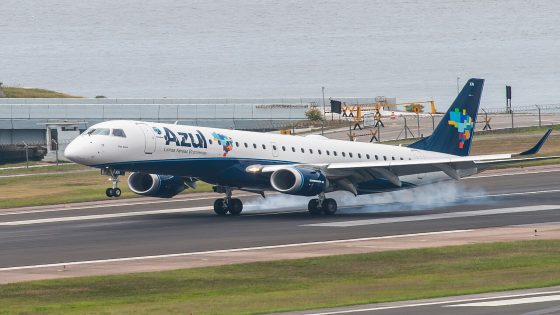An Azul flight faced a serious emergency due to low fuel levels on February 19, 2025. The Airbus A320, operating flight AD4781 from Viracopos Airport in Campinas to São Luís, Maranhão, had to divert to Parnaíba, Piauí, after inclement weather prevented landing at its intended destination. How does this incident highlight the importance of safety in air travel?
- Azul flight faced emergency due to low fuel
- Severe weather prevented landing in São Luís
- Aircraft diverted to Parnaíba for safety
- Pilot declared emergency "mayday fuel"
- Azul ensured passenger assistance after incident
- Flight resumed to São Luís after refueling
Azul Flight Emergency Highlights Importance of Aviation Safety
What happens when a flight runs low on fuel? On February 19, an Azul flight faced this very scenario. The pilot declared a “mayday” signal as the aircraft approached São Luís, where strong winds and storms made landing impossible. This incident serves as a reminder of the critical role that safety protocols play in aviation.
Understanding the Emergency Response in Aviation
In aviation, emergencies can occur unexpectedly. Here are key points regarding the Azul flight incident:
- The flight encountered severe weather, including high winds and thunderstorms.
- The pilot communicated a fuel emergency to air traffic control.
- Parnaíba was chosen as an alternative landing site due to better conditions.
- The aircraft landed safely and was refueled before continuing to São Luís.
What Led to the Emergency Situation?
Weather conditions can change rapidly, affecting flight safety. In this case, the pilot’s decision to divert was crucial. The aircraft had less than 30 minutes of fuel left, prompting the emergency declaration. This situation raises questions about how airlines prepare for such scenarios.
How Airlines Ensure Passenger Safety During Emergencies
Airlines like Azul prioritize passenger safety through strict protocols. Here’s how they manage emergencies:
- Regular training for pilots on emergency procedures.
- Real-time weather monitoring to inform flight decisions.
- Clear communication with passengers during emergencies.
- Compliance with aviation regulations set by authorities.
This incident serves as a reminder of the importance of safety in air travel. Passengers can feel more secure knowing that airlines are prepared for emergencies and prioritize their well-being.






























